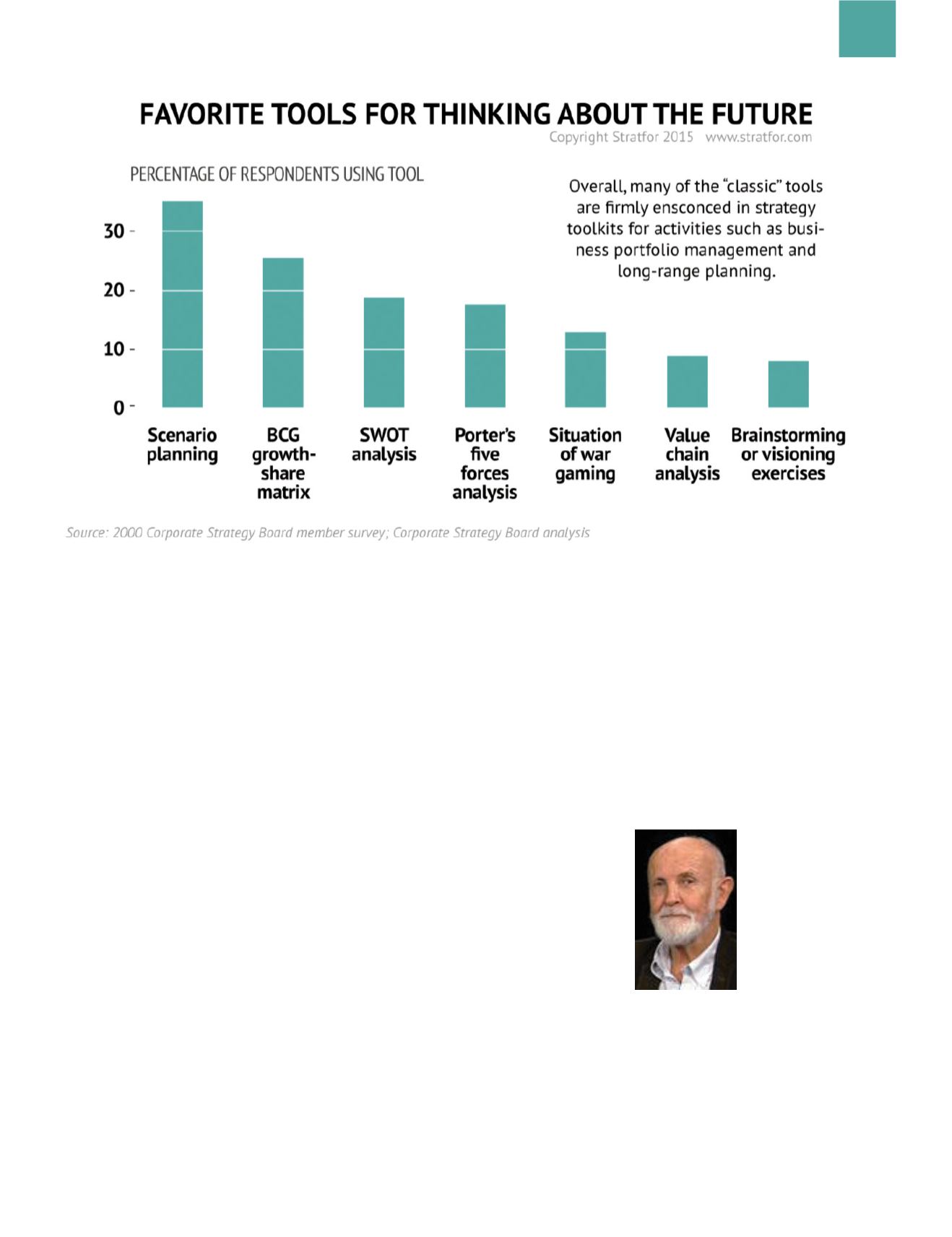
www.
nchra
.org
17
Early indicators are particularly important in moving
from a set of scenarios to a single strategy when you
cannot identify a single “strategy for all seasons.”
If you cannot find such a robust strategy, but you
have rehearsed what you would do in each of the
scenarios, then you keep a very close ear to the
ground for early indicators that suggest movement
in the direction of one scenario or another. When
you have accrued enough indicators to give
you confidence that you know which scenario is
unfolding, then you start to implement the strategy
most appropriate to that scenario.
MOVING FROM
SCENARIOS TO STRATEGY
Scenarios by themselves do not determine strategy
any more than a forecast does. A strategy needs to
be developed in light of a set of scenarios. Think of
scenarios as different hands of cards you might be
dealt; think of strategies as the way you would play
those cards. Sometimes scenarios are developed
after a strategy has been determined. In that case
the scenarios serve as a kind of wind tunnel for
stress-testing a strategy. Think of the strategy as a
model airplane. Under which conditions will it fly?
Under which conditions will it crash?
Using scenarios to test a strategy can function
like an insurance policy: You have a mechanism
for surviving certain unfortunate contingencies.
What if certain accidents happen? Do you have a
contingency plan?
Given a set of scenarios, there are several routes
you can travel from scenarios to strategy. Rather
than picking one scenario and betting the company,
it is far better to find a strategy that is robust across
the range of scenarios. “No brainers” create such
a strategy, but not all scenarios have no brainers.
Sometimes the relevant scenarios are sufficiently
diverse that no single strategy will prevail across
all of them. In that case it’s a good idea to have
a strategy appropriate to each, then attend very
closely to early indicators that would tip you to the
likelihood of one scenario over the others.
NOT ROCKET SCIENCE
Scenario planning is not rocket science. There is a
good deal of common sense involved in the practice
of scenario planning. But there are many ways to
go wrong, many mistakes that can be made. As
with many practices, experience is a good teacher.
Skilled facilitation by an experienced practitioner is a
must. Fortunately, the number of skilled practitioners
is increasing every day. As early as the turn of the
century, in 2000, the Corporate Strategy Board
polled its members to find out what tools they used
most for looking into the future. Responses from
183 corporations showed scenario planning to be
the most popular of eight different tools including
SWOT analysis, Delphi polling, Michael Porter’s five
forces of competitive position, and other such well-
known planning methods.
As scenario planning gains in popularity, its most
experienced practitioners keep exploring new
depths in its theory and its practice. Combining
Stratfor’s geopolitical analysis with scenario planning
may be the next frontier.
HR
Jay Ogilvy joined Stratfor’s editorial
board in January 2015. In 1979,
he left a post as a professor of
philosophy at Yale to join SRI, the
former Stanford Research Institute,
as director of research. Dr. Ogilvy
co-founded the Global Business
Network of scenario planners in
1987. He is the former dean and
chief academic officer of San
Francisco’s Presidio Graduate School. Dr. Ogilvy has published
nine books, including Many Dimensional Man, Creating
Better Futures and Living Without a Goal. Scenario Planning
and Strategic Forecasting is republished with permission of
Stratfor.
Scenario Planning


